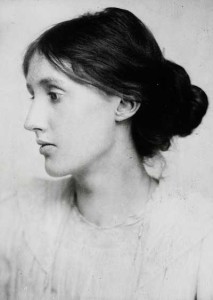Simple as it was, the rest cure ended up being quite controversial, since the majority of its patients were women. Dr. Mitchell’s theory about the rest cure centered around the belief that women were weak and could be hurt by too much education or stimulation. The nervous exhaustion so prevalent during the late 1800s was a consequence, in his view, of women trying to exceed their natural limitations. In fact, part of the cure involved putting female patients into a state of childlike dependence by forcing them to stay in bed and submit to a nurse’s care for even bathing and eating. (See last post.)
Charlotte Perkins Gilman, a writer and early feminist, took Mitchell’s rest cure and was nearly destroyed by it. In her words, she, “came so near the borderline of utter mental ruin that I could see over.” After going home and refusing to follow his advice, Gilman left her marriage and continued to write.
Her short story, “The Yellow Wallpaper,” published in 1913, describes her despair while taking the cure. Virginia Woolf also took a rest cure (though not with Mitchell) and wrote disparagingly of it afterward.
These women, and others, successfully rebelled against the restrictions and paternalism of the rest cure. However, it actually reflected prevailing medical views of the time: that women were frail and needed to do whatever their [male] physicians told them to do.







I’m so pleased you’re enjoying the posts. I appreciate you taking the time to make a comment and hope to keep holding your interest. And . . . coincidences are a lot of fun, aren’t they?
The Yellow Wallpaper is my all-time favorite horror story, and by strange coincidence, I just listened to it (again) on audio yesterday! I’ve followed your blog for a very long time, and enjoy every installment, both the succinct information and the historical photos. Thank you for the work you put into it.